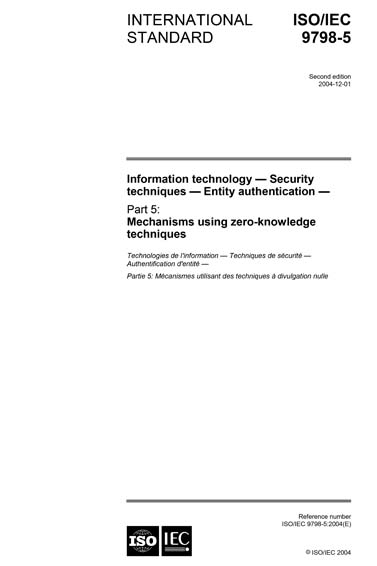Historical
ISO/IEC 9798-5:2004
Information technology - Security techniques - Entity authentication - Part 5: Mechanisms using zero-knowledge techniques
ISO/IEC 9798-5:2004 specifies authentication mechanisms in the form of exchange of information between a claimant and a verifier.
In accordance with the types of calculations that need to be performed by a claimant and the verifier (see Annex C), the mechanisms specified in ISO/IEC 9798-5:2004 can be classified into four main groups.
- The first group is characterized by the performance of short modular exponentiations. The challenge size needs to be optimized since it has a proportional impact on workloads.
- The second group is characterized by the possibility of a "coupon" strategy for the claimant. A verifier can authenticate a claimant without computational power. The challenge size has no impact on workloads.
- The third group is characterized by the possibility of a "coupon" strategy for the verifier. A verifier without computational power can authenticate a claimant. The challenge size has no impact on workloads.
- The fourth group has no possibility of a "coupon" strategy.
Content Provider
International Organization for Standardization [iso]






